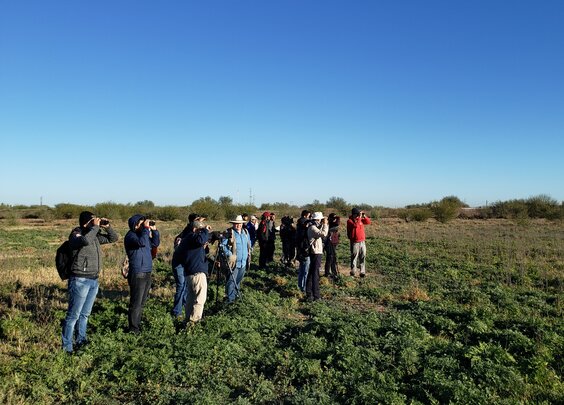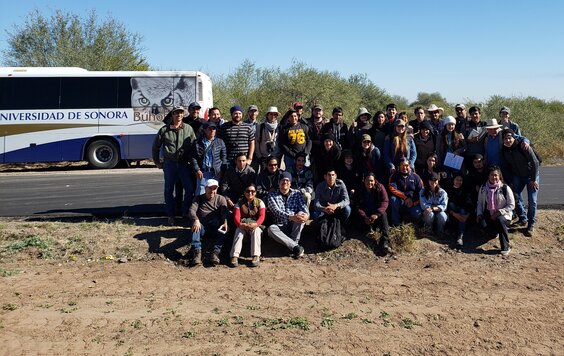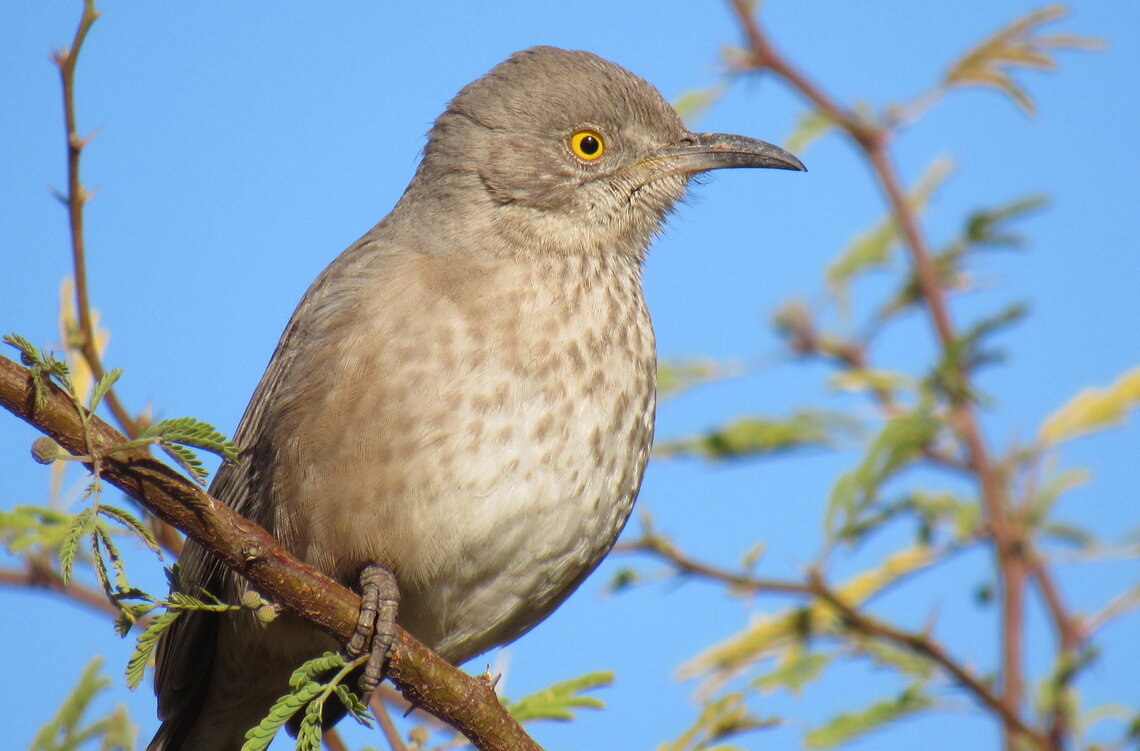By Carlos González Sánchez, Great Basin Bird Observatory
Within the Thrasher genus (Toxostoma), there are some very understudied species, mainly due to their great ability to go unnoticed in their habitats. Motivated in part by this, as well as concern over widespread population declines, the Desert Thrasher Working Group (DTWG) was formed in 2010. It’s a multidisciplinary group made up of educational institutions, non-governmental associations, as well as government and private agencies. The DTWG identified the need to better understand these birds, with the goal of developing management recommendations to address their long-term declines. One of the recent tasks of the DTWG was to establish a standardized protocol for detecting Bendire’s and LeConte’s Thrashers, and to conduct surveys across their ranges in the southwest U.S.

As initial efforts made by the DTWG mainly focused within the United States, knowledge about these species in northwest Mexico, where a large part of their populations reside, is almost completely unknown. The group has been looking for ways to expand the research efforts into Mexico to start to address these large data gaps. Thanks in part from funding provided by the Sonoran Joint Venture Awards Program, the Great Basin Bird Observatory received a grant to begin this work in partnership with researchers and local institutions in Mexico. This will include the translation of protocols and training materials into Spanish, survey training, initiating pilot studies, and sharing this data with the DTWG.

In February 2020, a series of two workshops were carried out to train biologists, students, government and NGO partners, and citizen scientists in Sonora on methods of identification and monitoring of these species. The workshops were held at two of the most important universities in the state: the University of Sonora, with a participation of 26 attendees, and the State University of Sonora, with a participation of 40 attendees. As part of this project, groups visited sites with potential thrasher habitat to gain practice and look for birds. Monitoring was carried out both by volunteers and by members of the Great Basin Bird Observatory at various locations within Sonora.
These workshops provided baseline knowledge for the participants to begin surveys of the target species now that they have gained the tools to identify them correctly, and can utilize user-friendly databases such as iNaturalist and aVerAves, increasing information provided by citizen scientists. Another result of this project are the ties formed with non-governmental organizations like Organización Vida Silvestre A.C. (OVIS), who have already started searching for thrashers at their work sites. Government agencies such as the Commission for Ecology and Sustainable Development of the State of Sonora, some of whose members participated in the workshops have joined the DTWG, forming a binational link to improve knowledge of the species.

These efforts should be just the beginning of both Mexican and American participation, leading to a better understanding of desert thrashers in the state of Sonora. Holding more workshops in other parts of the state will help bring this knowledge to more people. We hope to motivate volunteers to help discover new sites where these species are found, and use the standardized monitoring protocol developed by the DTWG. Likewise, furthering connections with local organizations, government agencies, students, teachers and including landowners in these types of activities are the next steps needed for this project to continue growing.

